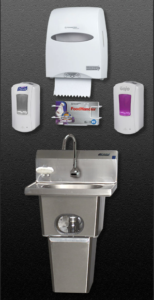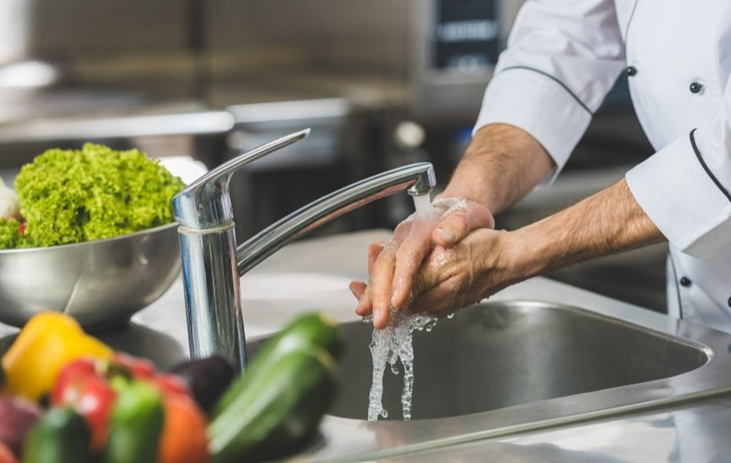Nowadays, there’s a good chance your food service provider is facing challenges above and beyond the everyday. Between attending to customers, keeping up with administrative duties, and of course, managing the seemingly insurmountable staffing issues, it’s possible food safety may be falling by the wayside. With employees coming and going, proper training may be difficult to achieve. And with the existing staff enduring the burden of a short-staffed kitchen, shortcuts may be taken to just “get the job done.”
Without proper food safety procedures in place at your institution, the other concerns are secondary. A food borne illness outbreak would be detrimental to your business on all levels. Illness aside, an outbreak would result in loss of sales, possible job loss, and damage to the reputation of the operation, the provider, and also to your organization. There are ways to ensure your provider is making food safety a priority. The first steps are educating yourself on the legal requirements and understanding the basics of food safety.
By law, your provider is required to develop, implement, and communicate policies and procedures that satisfy all local and state health, food and regulatory agencies. In fact, when managing RFP processes, JGL always requires health and safety information to be included in proposals from operators. And when it’s time to go to contract, it’s incredibly important to make sure your provider agreement specifies their responsibilities regarding food safety. You can dig out your food service agreement to see what your provider included as part of their health and safety processes. If you have doubts about the cleanliness of your operation or if you suspect unsafe practices, you can request to review your provider’s onboarding and training program to be sure they are upholding the terms of the agreement.
Here is a quick primer on the basics of food safety:
Hand Washing: Hands down (pun intended), the most important aspect of food safety is proper hand washing. Proper handwashing procedures should consist of thoroughly washing hands with warm or hot running water and soap for at least 20 seconds. Hand washing should be done anytime a food handler uses the restroom, changes gloves, after handling raw meats, before handling ready to eat foods, and after handling dirty dishware. Contrary to popular belief, the use of hand sanitizer alone is not a viable substitute. Staff must be educated, and the behavior must be modeled by management. Of course, a system must be in place to ensure proper supplies are stocked at easily accessible hand wash stations. Go on down to the kitchen. If you don’t see a station similar to the one shown below, that’s a problem!
Thawing Foods: There are three proper techniques for thawing foods to reduce the growth of harmful bacteria. The first (and best) is to thaw over time under refrigeration. This method requires proper menu and prep planning to ensure that the product is thawed in time for use. You can also thaw product under cool running water if time doesn’t permit proper thaw time in the walk-in cooler. While we all understand that hot water will expedite the process, it will also encourage bacteria growth. The third and final approved method is using a microwave. A microwave should only be used to thaw products when the product will be cooked immediately. By nature of the device, the food will begin to partially cook, and holding partially cooked food for later service is not recommended.
Internal Temperatures: Products must be cooked to the correct internal temperatures. If bacteria are present, improperly cooked foods will only encourage its growth. Having thermometers readily available is a key step to ensuring food is cooked properly. With analog thermometers, proper calibration is essential, and digital probes are a bit easier to manage. It’s a good idea to have signage in the prep/cooking areas detailing minimum internal temperatures and techniques to properly calibrate thermometers.
The above three items mentioned do not include everything that could go wrong in the kitchen, but they are reminders of the simple things that may get overlooked in a fast-paced, understaffed environment. Talk to your food service provider about what steps they are taking to ensure their staff is working in a clean, safe environment. Direct, open communication is really the best way to air doubts or grievances. And luckily, these items are easy to correct with the right training and equipment.
If you are not sure if the information in your agreement is being applied and are interested in refreshing your contract to be sure more specific health and safety measures are in place, JGL Consultants can help.
Now, go wash your hands!

